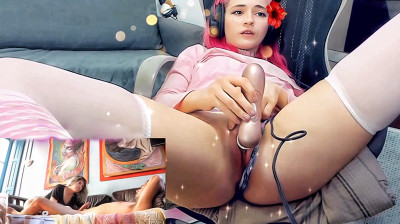Artistic Spanking
 Spanking art is a controversial subject that raises issues of consent, sexuality, and power dynamics. It has been met with both acclaim and outrage.
Spanking art is a controversial subject that raises issues of consent, sexuality, and power dynamics. It has been met with both acclaim and outrage.
Spanking is just one of the many kinks, fetishes and sexual practices that can enhance intimacy, pleasure and connection. Erotic spanking is very satisfying, particularly when done in a playful, loving way.
Spanking Art History
The early 1990s saw the introduction of the Internet, a revolution that gave individuals of all levels of pre-existing interest or knowledge the ability to create, share and consume spanking art at unprecedented scales. Usenet newsgroups on the subject sprang up, and websites were established to share erotic spanking artwork, photos, and videos with fans from all over the world.
In this period, comics became very popular. Many of them featured spanking. As the medium grew in sophistication, artists began to experiment with techniques to render scenes more realistically. Technological innovations, such as lithography and etching, allowed artists to reproduce their drawing on a variety of paper types, with fine gray gradients from black to white.
Lastly, the advent of digital photography allowed for the capture of very detailed images, that could then be printed on photographic paper. These technologies facilitated the development of a large range of spanking-related art styles, from realistic to fetishistic and everything in between.
Contemporary Spanking Art
Artistic spanking continues to be a controversial topic, provoking debate and discussion of human behavior and societal norms. It is a powerful way to explore and introspection, allowing artists the opportunity to examine the complexity of human emotion and culture narratives.
As society has progressed, spankings in art have evolved from being portrayed as a punishment to a nuanced representation that shows the interplay of discipline and power. Today, spanking is seen in a variety of media including fashion photography and music videos. In these genres spanking scenes are often used to define relationships or highlight power dynamics.
Contemporary spanking art is an erotica sub-genre that explores the romance behind discipline. It is often centered on boys being spanked, and can be a F/B pairing or M/F pairing. The style of spanking art today can be very diverse, from cartoon-style drawings to realistic images with vivid colors and high contrasts. Many of these pieces are created by hobby (fan) artists, who typically run spanking paysites or contribute artwork to online communities.
A growing number spanking art enthusiasts also focus on the topic, creating a sub-genre in corporal punishment erotica. This art can be found in a number of different mediums, including painting, drawing, and digital media. Some of these pieces are based on historical spanking paintings, while others are more modern depictions of boys being spanked by their parents or other adults.
Historical Spanking Art
The themes of discipline and power are explored in historical spanking art, which often reflects societal views by visual storytelling. Whether in the form of illustrations or paintings, these works offer complex interpretations that engage and challenge viewers to reassess their own beliefs about discipline and punishment.
Throughout history, artistic depictions of spankings have evolved, changing from being public spectacles to more intimate and domestic settings. This shift coincided with a shift in attitudes toward punishment and discipline. They were no longer seen as cruel or amoral, but as necessary to develop morals.
Artists were able, as the art form evolved, to produce more realistic and lifelike depictions of spankings by using techniques such a shading, hatching and texture. These developments led to the creation of many historical spanking art pieces, often appearing in books and religious materials.
During this period, erotic spanking began to develop. This was facilitated by the rise of fetish magazines and the invention of new image compression technology that allowed spanking art to be produced and made easily available to consumers.
Erotic spanking artwork usually features girls as spankees. This sub-genre can be seen in various settings, such as domestic or school roleplay scenarios. These drawings often include the use of an apparatus, such as a vaulting buckle (which bends the receiver over it). Often, this type of spanking art will be used in conjunction with other forms of sexual roleplay.
Spanking as a Therapy
Spanking art isn’t just about pleasure or exploration of kink, it can also be used as a type of narrative therapy. These artworks are a way to explore complex feelings related to discipline, power and childhood trauma. They can also encourage discussion of taboo topics, and provoke debate about societal norms.
Historically, sex and kink have been associated with mental illness. In fact, in the 1980s, fetishes like spanking were classified as a mental disorder under the American Psychiatric Association’s Diagnostic and Statistical Manual of Mental Disorders (DSM-5). In recent years, the field psychkinesis discovered that certain types kinks can actually have psychological benefits. For example, slapping the buttocks releases adrenalin and oxytocin, which promotes relaxation and reduces stress.
Ecobiodevelopmental Theory, which is gaining popularity, asserts that childhood stressors such as abusive parenting can alter a child’s genetic predispositions. This can lead to long-term emotional and health problems. The theory suggests that this may explain why studies of people who are spanked as children show a greater risk for depression, anxiety, and other emotional problems later in life.
Many people who enjoy the kink of spanking also use it as a form of self-healing or personal growth. Pleasure-based kink educator Lateef Taylor says that “for a spanking to be therapeutic, it must be done with the intention to work through some issue or process some emotion.” She adds that there’s a difference between a regular spanking session and one that qualifies as spanking therapy, which should be conducted by a qualified professional.
